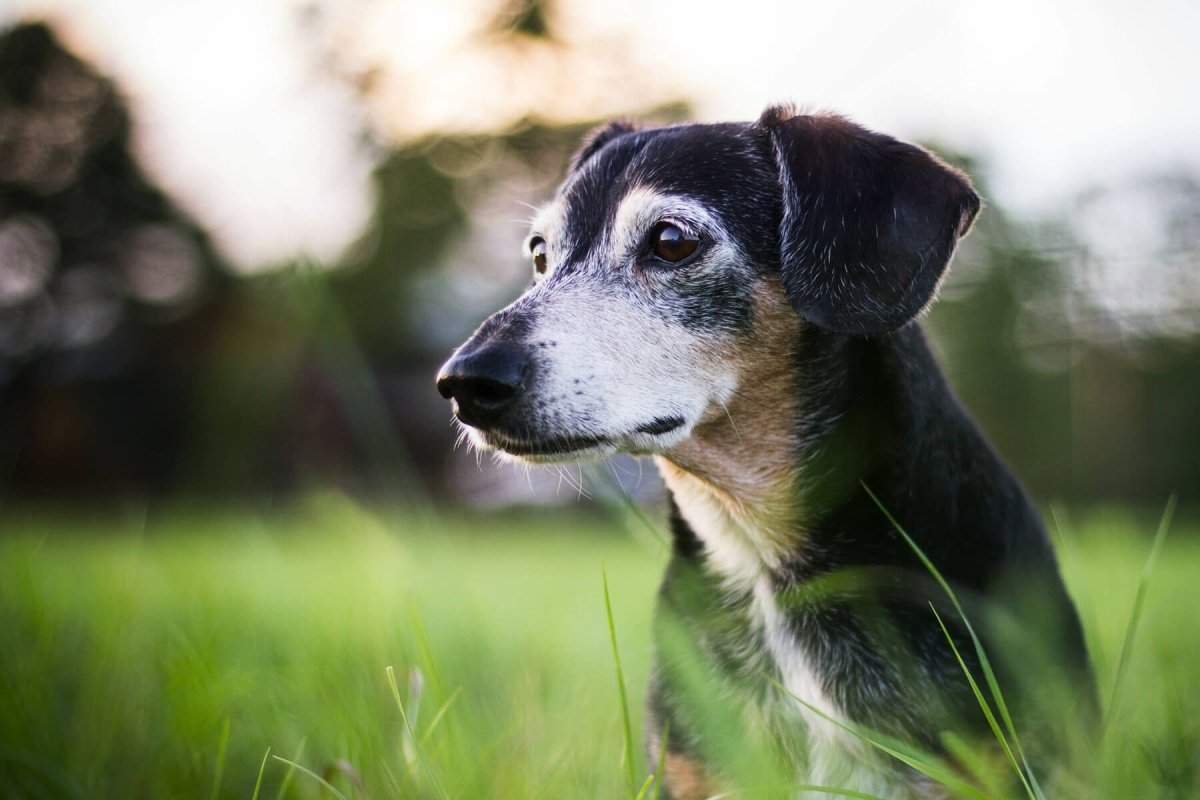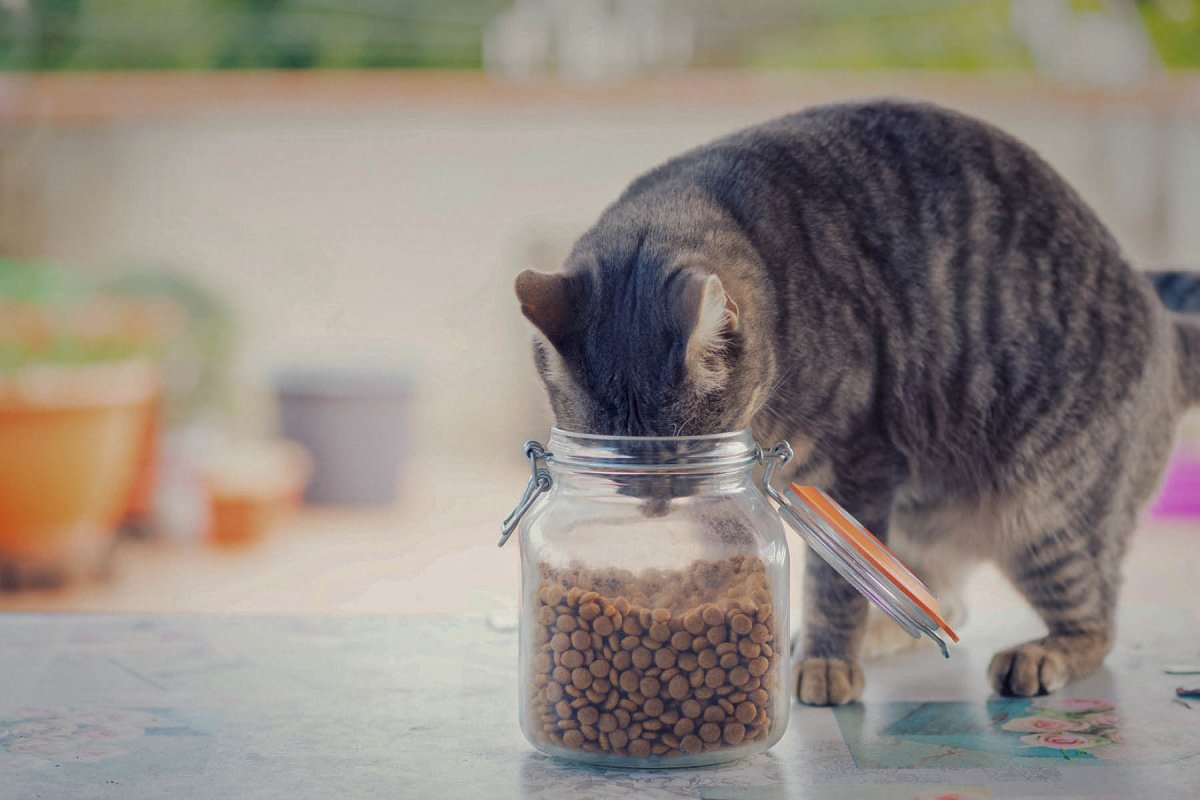A dog's coat is an important indicator of its health. If it is brittle, dull or even too greasy, it can be a sign of an imbalance in your four-legged friend's body. Nutritional deficiencies, parasites or infections are common triggers. In this article, we explain how often you should brush, comb or wash your dog and which coat care is right for dogs.
What does a dog's coat do?
A dog's coat is a miracle of nature. While the top coat protects against injuries and determines the color of the coat, the undercoat is important for regulating cold and heat. The dog's coat adapts to the weather conditions and regulates the four-legged friend's body heat. If it is cold, the coat protects your dog from icy temperatures. When it is hot and sunny, it cools.
The dog's coat can also repel dirt and moisture. The fatty layer of the skin plays an important role here. It provides the coat with important nutrients and forms a protective acid mantle. This protective acid mantle has a repellent effect on liquids and dirt and forms an insulating layer against temperature fluctuations. As a result, the coat even reduces the risk of injury to the dog by absorbing shocks.

The dog's coat also serves as a means of communication and as a health indicator. If the coat is shiny and strong, the four-legged friend also looks well and healthy.
How often do I need to brush my dog?
Grooming a dog's coat is a natural, innate impulse. When dogs live together in a pack, grooming is done by other dogs. It is not unusual to see our four-legged friends licking their paws or cleaning each other's eyes, ears and fur. Grooming also serves as a social factor for dogs and other animals and strengthens the bond between them. Today, very few dogs belong to a pack, so humans have to take on this task. The dog ear cleaner can be used to gently remove dirt from the external auditory canal and care for the ears with the help of natural chamomile extracts. You should also brush your pet's ears regularly, especially after walks during the tick and flea season. This will help you detect ticks on dogs, fleas and other parasites at an early stage. We offer a spot-on for dogs to effectively repel and prevent ticks and other parasites.
Active grooming is also a must in spring and fall when your dog's coat is changing. Regular brushing makes it easier for your pet to change its coat and boosts the skin's metabolism. Dog owners also benefit from regular grooming as their four-legged friend automatically leaves less hair behind that needs to be vacuumed up.
However, we recommend regular dog grooming. This is because it promotes your dog's health and well-being. Dirt particles, calluses and dead dandruff can be easily removed during combing and brushing. This makes the skin more breathable. In addition to a wellness and massage effect, regular combing of the dog's coat stimulates blood circulation in the skin and sebum production. The hair roots are supplied with nutrients and new fur can grow back better.
The effort and intensity of grooming always depends on the needs of the dog's coat. If it is particularly long and thick, more frequent brushing is necessary. Short, smooth coats require less active grooming. If a dog's coat is neglected, the risk of fungal and parasite infestation as well as various infections and skin diseases increases. As a rule of thumb, every dog should be combed or brushed at least once a week - regardless of the length and texture of the coat.
Which brush is suitable for which coat?
Grooming dogs: Long hair
Do you have a long-haired dog? Then you need to brush, brush and brush again. Unfortunately, there's no getting around frequent brushing with long-haired dogs. Depending on the breed, daily brushing and combing may even be necessary. This is because long coats get dirty and matted much more quickly than short coats. In addition, many dogs with long coats also have thick undercoats, which require regular and intensive grooming.
You can pre-comb your long-haired dog with a coarse comb and comb it again with a fine comb. Dogs with long coats can also be combed against the grain at the beginning to loosen up the coat and remove loose hair. The dog should then be brushed from the base of the head to the tail using a wire brush specially designed for long-haired dogs or a natural brush. If you find slight matting in your pet's coat, you can either loosen it with your fingers or comb it out with a fine comb: Hold the tangles with one hand and comb out the tuft of hair with the other. This way, it won't pull on the skin too much.
Grooming dogs: Shorthair
Short-haired dogs require the least amount of grooming. They do not need to be brushed as often as their long-haired counterparts. However, the breed of dog plays a decisive role here: Rough-haired breeds such as the Airedale Terrier require more effort than Beagles, which have a short, smooth and low-maintenance coat.
A coat comb and brush are also part of the basic grooming equipment here. A terrier curry comb is recommended for bristly terrier hair. The close-fitting wire pins make it easier to remove light matting and tangles. A de-matting tool for dogs is suitable for removing stubborn tangles from short-haired coats. Some short-haired dogs have a lot of undercoat and also need to be trimmed. There are special trimmers and trimming blades for this.
As a rule, grooming short-haired dogs 1-2 times a week is sufficient - except when the coat changes, when even short-haired dogs need to be brushed, brushed, brushed. The Furminator is particularly popular during coat changes. However, make sure that you do not use the Furminator too often. A dog without fur is not a solution either.
How often can I bathe my dog?
If the dog is brushed properly, it will save him a bath or two. Bathing the dog removes a lot of loose hair at the same time, but it can also affect the pH value of the dog's skin. Bathing your dog too often can cause the skin's natural oil film to change or even dissolve. Skin diseases, so-called dermatoses, can be the result. Frequent dog bathing also affects the appearance of the dog's coat, which can become shaggy and dull.

If your four-legged friend has rolled around in mud and sludge and a bath is unavoidable, you should use natural dog shampoos. For sensitive dogs, pay special attention to a sensitive shampoo that has been specially developed for the needs of sensitive dog skin.
Dog coat care: part of the basic equipment
There is a suitable grooming product for every coat type. Whether comb, brush or trimmer, the dog's coat determines the grooming tool. Here you will find a list of the most important utensils for grooming at home:
- Coat comb and brush - a wire brush for long-haired dogs
- Terrier curry comb for stubborn bristly fur
- Trimmer, especially for short-haired dogs with a lot of undercoat
- Furminator for shedding
- AniForte® Coat harmony shampoo coconut
- For sensitive dogs, use AniForte® Coat Harmony Shampoo Sensitive
- AniForte® Coat Harmony Care Spray C oconut for easier brushing





